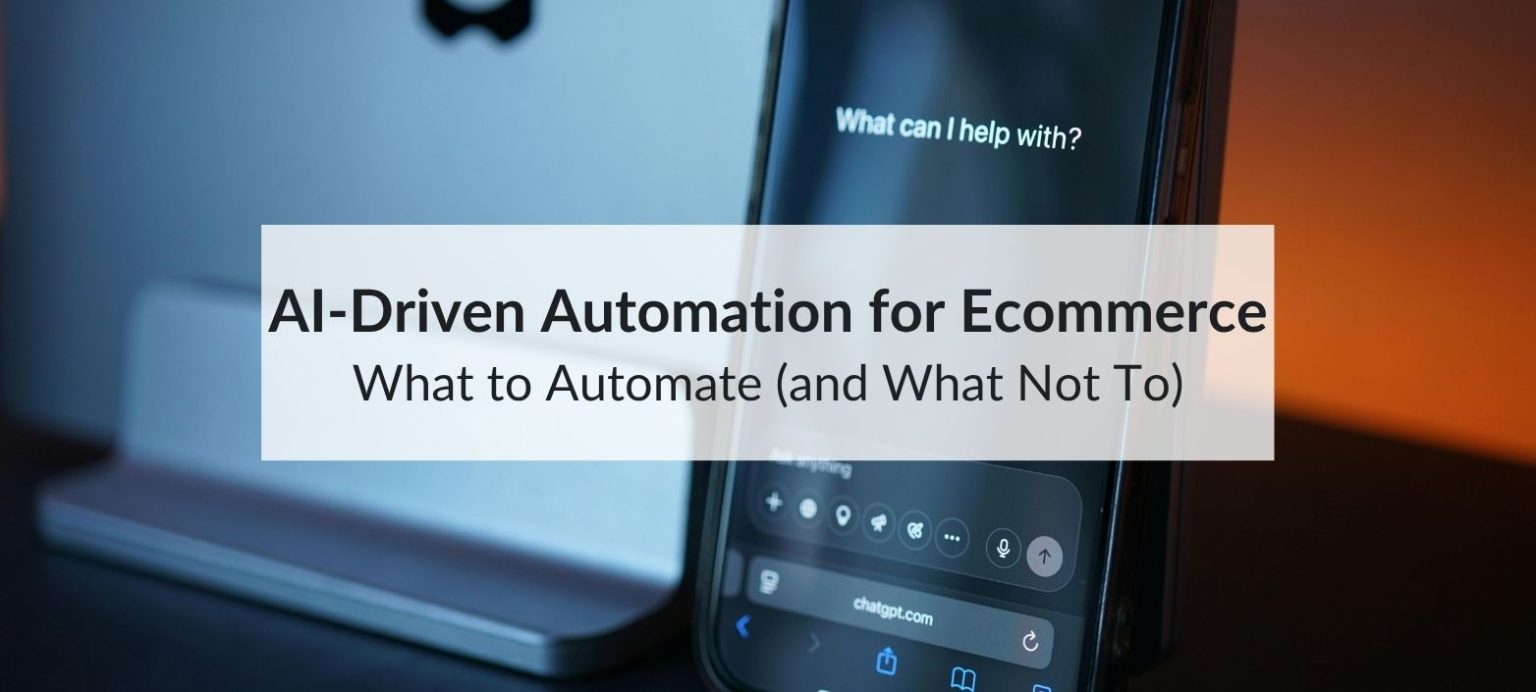AI-driven automation is helping ecommerce businesses become more efficient. But automation isn’t always the right answer for every task. Knowing what to automate ,and what still needs a human touch, can prevent costly mistakes and improve long-term performance.
What to Automate in Ecommerce
✅ Product Recommendations Based on User Behaviour
AI tools can analyze browsing history, click patterns, and purchase habits to generate real-time product suggestions. This personalization increases the average order value and customer satisfaction.
Compatible platforms: Magento, Shopify, BigCommerce
Example: A repeat customer who recently bought dog food might see matching pet toys or grooming items on their next visit which boosts upsells with zero manual input.
✅ Inventory Alerts and Replenishment
Running out of stock frustrates customers and costs you sales. AI-powered systems can track inventory levels and automatically trigger reorders before stockouts occur.
Pro tip: Use tools like Linnworks for automated inventory syncing across channels (Amazon, eBay, your Magento store, etc.).
✅ Abandoned Cart Recovery
Customers often leave items behind. AI can detect abandoned carts and send automated, personalised emails to win those sales back.
A simple 3-step sequence — reminder → incentive → urgency — can recover up to 20% of lost sales.
Top tools: Klaviyo, Dotdigital
✅ Fraud Detection and Prevention
AI can identify fraud in real time by scanning for red flags such as mismatched addresses, unusual login attempts, or risky payment behaviours.
Built-in AI examples: Stripe, PayPal
Advanced protection: Signifyd integrates directly into Magento and Shopify for real-time fraud prevention using historical data.
✅ Dynamic Pricing (Used Strategically)
In hyper-competitive markets, AI can help you stay ahead by adjusting prices dynamically based on competitor activity, demand, or stock levels.
Caution: Avoid aggressive undercutting that erodes trust or margin. Set rules and boundaries.
Tools to try: Prisync, Intelligems
What Not to Automate in Ecommerce
❌ Responding to Complex Customer Complaints
It’s tempting to automate customer service, and for basic queries like shipping updates, that’s fine. But when customers are upset about missing items, damaged goods, or refunds, a canned reply does more harm than good.
Customers want empathy and solutions, not robotic scripts. Always keep a human in the loop for high-stakes issues.
❌ Brand Voice in Content Creation
AI tools like ChatGPT or Jasper can speed up content ideation and drafts. But fully automating your blog posts, product pages, or social captions risks sounding bland or off-brand.
Best practice: Let AI handle outlines or product bullet points, but always humanise the final copy to match your tone and storytelling style.
❌ Major UX or Design Changes
AI-powered tools like heatmaps and A/B testing can suggest improvements. But fully automating UX changes without human review is risky.
Example: An AI might recommend removing detailed product descriptions to speed up checkout, but that content may be critical for SEO or customer understanding.
Design decisions require human judgment for usability, accessibility, and brand cohesion.
❌ Sensitive Refunds or Disputes
Refunds aren’t always black and white. Automating refunds based on a return request without context may frustrate loyal customers or lead to revenue loss.
Instead, use automation to flag issues for manual review, and empower your support team to respond with flexibility and care.
Summary: Striking the Right Balance
AI automation can absolutely make your ecommerce business faster and smarter — but only when applied strategically.
Here’s a quick cheat sheet:

When used correctly, automation saves time and drives growth. But letting machines take over everything, especially in areas that require empathy or creativity, can backfire.
Using AI-Driven Automation on Magento Stores
If your store runs on Magento, good news: you’ve got one of the most flexible platforms when it comes to AI integrations. Magento supports a wide range of automation tools and extensions, from abandoned cart recovery modules to real-time recommendation engines and fraud protection plugins.
Not sure where to start? Begin with abandoned cart flows or smart recommendations as they offer quick wins and measurable ROI.

